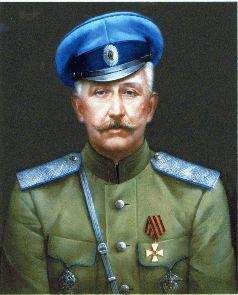Эллиот Аронсон - Общественное животное. Введение в социальную психологию

Помощь проекту
Общественное животное. Введение в социальную психологию читать книгу онлайн
46. Baron, R.S., Burgess, M.L., amp; Kao, C.F. (1991). Detecting and labeling prejudice: Do female perpetrators go undetected? Personality and Social Psychology Bulletin, 17, 115-117.
47. Bern, S.L. (1975). Sex-role adaptability: One consequence of psychological androgyny. Journal of Personality and Social Psychology, 31, 634-643. Chesler, P. (1972). Women and Madness. New York: Avon Books.
48. Jackson, L.A., amp; Cash, T.F. (1985). Components of gender stereotypes: Their implications for inferences on stereotypic and nonstereotypic dimensions. Personality and Social Psychology Bulletin, II, 326-344.
49. Homer, M.S. (1970). Femininity and successful achievement: Abasic inconsistency. In J.M. Bardwick et al. (Eds.), Feminine personality and conflict. Monterey, CA: Brooks/Cole. Homer, M.S. (1972). Toward an understanding of achievement-related conflicts in women. Journal of Social Issues, 28, 157-175.
50. Cherry, F., amp; Deaux, K. (1975). Fear of success versus fear of gender-inconsistent behavior: A sex similarity. Paper presented at the Midwestern Psychological Association Convention.
51. Gerbner, G. (1993). Women and Minorities on Television. Unpublished paper, the Annenberg School for Communication, University of Pennsylvania. Gerbner, G., Gross, L., Morgan, M., amp; Signorielli, N. (1993). Growing up with television: The cultivation perspective. In J. Bryant and D. Zillman (Eds.), Media Effects: Advances in theory and research. Hilisdale, NJ: Eribaum.
52. Thibodeau, R. (1989). From racism to tokenism: The changing face of blacks in New Yorker cartoons. Public Opinion Quarterly, 53, 482-494.
53. Kolbe, R., amp; LaVoie, /.(1981). Sex-role stereotyping in preschool children's picture books. Social Psychology Quarterly, 44, 369-374.
54. Chavez, D. (1985). Perpetuation of gender inequality: A context analysis of comic strips. Sex Roles, 13, 93-102,
55. Geis, F., Brown, V., Jenningf(Walstedt), J., amp; Porter, N. (1984). TV commercials as achievement scripts for women. Sex Roles, 10, 513-525.
56. Cracker, J., Thompson, L.L., McGraw, K.M., amp; Ingerman, C. (1987). Downward comparison, prejudice, and evaluations of others: Effects of self-esteem and threat. Journal of Personality and Social Psychology, 52, 907-916.
57. Dollard, J. (1987). Class and caste in a southern town. New Haven: Yale University Press.
58. Bettelheim, B., amp; Janowit^, M. (1964). Social change and prejudice, including dynamics of prejudice. New York: Free Press.
59. Tumin, M., Barton, P., amp; Burrus, B. (1958). Education, prejudice, and discrimination: A study in readiness for desegregation. American Sociological Review, 23, 41-49.
60. Levitas, M. (1969). America in crisis. New York: Holt, Rinehart and Winston.
61. Dollard, J. (1938). Hostility and fear in social life. Social Forces,]7, 15-26.
62. Roberts, E., цит. по: P. Jacobs and S. Landau (1971). To serve the devil (Vol. 2, p. 71). New York: Vintage Books.
63. Cracker, С., цит. по: P. Jacobs and S. Landau (1971). To serve the devil (Vol. 2, p. 81). New York: Vintage Books.
64. Greeley, A., amp; Sheatsley, P. (1971). The acceptance of desegregation continues to advance. Scientific American, 225 (6), 13-19. См. также: Vanneman, R.D., amp; Pettigrew, T.F. (1972). Race and relative deprivation in the urban United States. Race, 13, 461-486.
65. Sherif, M., Harvey, O.J., While, B.J., Hood, W., amp; Sherif, C. (1961). Intergroup conflict and cooperation: The Robbers Cave experiment. Norman: University of Oklahoma Institute of Intergroup Relations.
66. Hovland, C., amp; Sears, R. (1940). Minor studies of aggression: Correlation of lynchings with economic indices. Journal of Psychology, 9, 301-310.
67. Klineberg, 0. (1971). Black and white in international perspectives. American Psychologist, 26,119-128.
68. Speer, A. (1970). Inside the Third Reich: Memoirs (R. Winston and C.Winston, Trans.). New York: Macrnillan.
69. Miller, N., Bugelski, R. (1948). Minor studies in aggression: The influence of frustrations imposed by the in-group on attitudes expressed by the out-group. Journal of Psychology, 25,437-442.
70. Rogers, R., amp; Prentice-Bum, S. (1981), Deindividuation and anger-mediated interracial aggression: Unmasking regressive racism. Journal of Personality and Social Psychology, 41,63-73.
71. Weatherly, D. (1961). Antisemitism and the expression of fantasy aggression. Journal of Abnormal and Social Psychology, 62, 454-457.
72. Adomo, Т., Frenkel-Brunswick, E., Levinson, D., amp; Sanford, R.N. (1950). The authoritarian personality. New York: Harper.
73. McFarland, S.M., Ageyev, V.S., amp; Abalakina-Paap, M.A. (1992). Authoritarianism in the former Soviet Union. Journal of Personality and Social Psychology, 63, 1004-1010.
74. Greeley amp; Sheatsley, Acceptance of desegregation.
75. Pettigrew, T.F. (1959). Regional differences in anti-Negro prejudice. Journal of Abnormal and Social Psychology, 59, 28-36.
76. Pettigrew, T.F. (1958). Personality and sociocultural factors and intergroup attitudes: Across-national comparison. Journal of Conflict Resolution, 2, 29-42.
77. Watson, J. (1950). Some social and psychological situations related to change in attitude. Human Relations, 3, 15-56.
78. Kirkland, S.J., Greenberg, J., amp; Pys^c^ynski, T. (1987). Further evidence of the deleterious effects of overheard derogatory ethnic labels: Derogation beyond the target. Personality and Social Psychology Bulletin,]3, 216-227.
79. MacCrone, 1. (1937). Race attitudes in South Africa. London: Oxford University Press.
80. Laarsfeld, P. (1940). Radio and the printed page. New York: Duell, Sloan amp; Pearce.
81. Deutsch, M., amp; Collins, A^. (1951). Interracial housing: A psychological evaluation of a social experiment. Minneapolis: University of Minnesota Press. CM. также: Wilner, D., Walkley.R., amp; Cook, S. (1955). Human relations in interracial housing. Minneapolis: University of Minnesota Press.
82. Brehm, J. (1959). Increasing cognitive dissonance by a fait-accompli. Journal of Abnormal and Social Psychology, 58, 379-382.
83. Darley, D., amp; Berscheid, E. (1967). Increased liking as a result of the anticipation of personal contact. Human relations, 20, 29-40.
84. National Opinion Research Center (1980). General social surveys, 1972- 1980: Cumulative codebook. Storrs, CT: Roper Public Opinion Research Center, University of Connecticut.
85. Pettigrew, T.F. (1961). Social psychology and desegregation research. American Psychologist, 16,105-112.
86. Clark, К.В. (1953). Desegregation: An appraisal of the evidence. Journal of Social Issues, 9, No. 4.
87. Stouffer, S., Suchman, E., DeVinney, L., Star, S., amp; Williams, R., Jr. (1949). The American soldier: Adjustment during army life. In Studies in social psychology in WW II (Vol. 1). Princeton: Princeton University Press.
88. Kramer, B. (1951). Residential contact as a determinant of attitudes toward Negroes. Unpublished Ph.D. dissertation, Harvard University. Winder, A. (1952). White attitudes towards Negro-white interaction in an area of changing racial composition. American Psychologist, 7, 330-331.
89. Asher, S., amp; Alien, V. (1969). Racial preference and social comparison processes. Journal of Social Issues, 25, 157-166. Stephan, W., amp; Kennedy, J. (1975). An experimental study of inter-ethnic competition in segregated schools. Journal of School Psychology, 13, 234-247. Gerard, H., amp; Miller, N. (1976). School desegregation. New York: Plenum.
90. Stephan, W.G. (1978). School desegregation: An evaluation of predictions made in Brown v. The Board of Education. Psychological Bulletin, 85, 217-238.
91. Lester, J. (1971). Beep! Beep! Umgawa! Black Power! In R. Kytie (Ed.), Confrontation: Issues of the 70's (pp. 162-181). New York: Random House.
92. Deutsch amp; Collins, Interracial housing.
93. Sherif, M., amp; Sherif, C. (1956). An outline of social psychology. New York: Harper amp; Bros. Sherif, Harvey, White, Hood, amp; Sherif, Intergroup conflict and cooperation.
94. Deutsch, M. (1949). A theory of cooperation and competition. Human Relations, 2, 129-152. Deutsch, M. (1949). An experimental study of the effects of cooperation and competition upon group process. Human Relations, 2, 199-232.
95. Keenan, P., amp; Camevale, P. (1989). Positive effects of within-group competition on between-group negotiation. Journal of Applied Social Psychology, 19, 977- 992.
96. Aronson, E., Stephan, С., Sikes, J., Blaney, N., amp; Snapp, M. (1978). Thejigsaw classroom. Beverly Hills, CA: Sage Publications. Aronson, E., amp; Osherow, N. (1980). Cooperation, prosocial behavior, and academic performance: Experiments in the desegregated classroom. In L. Bickman (Ed.), Applied Social Psychology Annual (Vol. I, pp. 163-196). Beverly Hills, CA: Sage Publications.
97. Stephan, W. (1975). An experimental study of interethnic competition in segregated schools. Journal of School Psychology, 13, 234-247.
98. Geffner, R. (1978). The effects of interdependent learning on self-esteem, inter-ethnic relations, and intra-ethnic attitudes of elementary school children: A field experiment. Unpublished Ph. D. dissertation, University of California, Santa Cruz. Gon^ale^, A. (1979). Classroom cooperation and ethnic balance. Unpublished Ph. D. dissertation, University of California, Santa Cruz.
99. Lucker, W., Rosenfield, D., Sikes, J., amp; Aronson, E. (1977). Performance in the interdependent classroom: A field study. American Educational Research Journal, 13, 115-123.
100. Desforges, D.M., Lord, C.G., Ramsey, S.L., Mason, J.A., Van Leeuwen, M.D., West, S.C., amp; Lepper, M.R. (1991). Effects of Structured Cooperative Contact on changing negative attitudes towards stigmatized social groups. Journal of Personality and Social Psychology, 60, 531-544.
101. Gaertner, S.L., Mann, J.A., Dovidio, J.F., Murrell, A. J., amp; Pomare, M. (1990). How does cooperation reduce intergroup bias? Journal of Personality and Social Psychology, 59,692-704.
102. Bridgeman, D. (1981). Enhanced role-taking through cooperative interdependence: A field study. Child Development, 52, 1231-1238.
103. Stephan, С., Kennedy, J., amp; Aronson, E. (1977). Attribution of luck or skill as a function of cooperating or competing with a friend or acquaintance. Sociometry, 40, 107-1 II. Presser, N., Stephan, C., Kennedy, J., amp; Aronson, E. (1978). Attributions to success and failure in cooperative, competitive, and interdependent interaction. European Journal of Social Psychology, 8, 269-274. Stephan, S., Burnhain, M., amp; Aronson, E. (1979). Attributions for success and failure after cooperation, competition, or team competition. European Journal of Social Psychology, 9, 109-114,
104. Slavin, R. (1990). Research on cooperative learning: Consensus and controversy. Educational Leadership, 52-54.
105. Kohn, A. (1986). No Contest. Boston: Houghton Mifflin.
106. McConahay, J.B. (1981). Reducing racial prejudice in desegregated schools. In W.D. Hawley (Ed.), Effective school desegregation. Beverly Hills, CA: Sage.
107. Gonzalez., A. (1979). Classroom cooperation and ethnic balance. Unpublished Ph.D. dissertation, University of California, Santa Cruz. Aronson, E., amp; Gonzalez., A. (1988). Desegregation, jigsaw and the Mexican-American experience. In P. Katz and D. Taylor, Eliminating Racism. New York: Plenum.
108. Pettigrew, T.F. (1961). Social psychology and desegregation research. American Psychologist, 15, 61-71.
К главе 8 Симпатия, любовь и межличностная сенситивность
1. Darwin, С. (1910). The expression of emotions in man and animals. New York: Appleton.
2. Carnegie, D. (1937). How to win friends and influence people. New York: Simon amp; Schuster. Рус. пер. - КарнегиДейл. Как завоевывать друзей и оказывать влияние на людей. М.: Прогресс, 1989.
3. Remmers, Н.Н., amp; Radler, D.H. (1958). Teenage attitudes. Scientific American, 198 (6), 25-29.
4. Lemmann, Т., amp; Solomon, R. (1952). Group characteristics as revealed in sociometric patterns and personality ratings. Sociometry, 15, 7-90.
5. Homans, G. (1961). Social behavior: Its elementary forms. New York: Harcourt, Brace and World.
6. Walster (Hatfleld), E., Aronson, V., Abrahams, D., amp; Rottman, L. (1966). Importance of physical attractiveness in dating behavior. Journal of Personality and Social Psychology, 5,508-516.
7. Буте, D. (1969). Attitudes and attraction. In L.Berkowitz (Ed.), Advances in experimental social psychology (Vol. 4). New York: Academic Press.
8. Sherif, М. (1956). Experiments in group conflict. Scientific American, 195, 53-58.
9. Aronson, E., Stephan, C., Sikes, J., Blaney, N., amp; Snapp, М. (1978). The jigsaw classroom. Beverly Hills, CA: Sage Publications. Aronson, E., amp; Osherow, N. (1980). Cooperation, prosocial behavior, and academic performance: Experiments in the desegregated classroom. In L. Bickman (Ed.), Appliedsocialpsychology annual (Vol. I, pp. 163-196). Beverly Hills, CA: Sage Publications.























